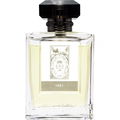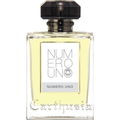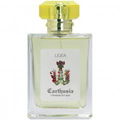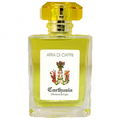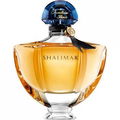Translated
Show original
Show translation

Serenissima
Top Review
16
for many years: Longing for Italy
Capri - alone the word that already sounds like sun and vacation: simply after the ever so necessary "dolce far niente"!
Since the mid-fifties longing place of the Germans with "Blue Grotto" and the "golden sun that sinks into the sea".
Also the film "The doctor of San Michele" about the writer and doctor Axel Munthe inspired the fantasies and the wanderlust of the Germans at that time well covered by the economic miracle.
The destination of longing lies just beyond the Brenner!
But with it the Germans and other strangers were not the first, which longed for this island, in the middle of the blue sea.
As early as 26 AD, the Roman Emperor Tiberius moved his seat of government to Capri.
Historians still wonder what reasons he may have had for doing so. Ancient poets including Tacitus suspected that the emperor withdrew there to be able to "undisturbed indulge his pleasures".
Whatever reasons the emperor may have had at the time, already in the second half of the 19th century Capri became the winter and vacation quarters of well-known Germans, artists, writers and other international celebrities.
Thus one met there among other things Friedrich Alfred Krupp (from which the press later suspected that he also wanted to indulge there undisturbed his "lusts"), Rainer Maria Rilke, Maxim Gorki, whose villa became again and again the meeting place of Russian exiles and many others, which to enumerate here the framework of a perfume comment would go beyond.
Since 1899, there even exists a "German Protestant Church" with its own cemetery; there, the religious affiliation plays no role in the burial.
Also in the twenties of the last century Capri was further refuge of many Russians, who had left their country because of the revolution.
Claude Debussy dedicated one of his most beautiful preludes to the hills of Anacapri ("Les colins d'Anacapri").
Even the "great" Thomas Mann indirectly left his mark there: his daughter Monika Mann (the so-called "monk" so often reviled by the family) lived from 1954 in the "Villa Monacone", where the painter Oscar Kokoschka was a favorite guest.
As is known, Kokoschka gladly took what was offered to him. The wives of other men were no exception; even if he created much later the official painting of Chancellor Konrad Adenauer for the "Chancellor's Gallery".
"Warned" here also from the magic of the shopping streets "Via Roma" and "Via Canarella", which branch off from the piazza of the small town of Capri. Here it is perhaps advisable to put on some kind of blinders, if the credit card limit should not necessarily be exhausted. There "lives" namely the temptation!
The evergreen vegetation of the island is complemented by terraced crops of vines, olive trees and fruit trees.
A large part consists of fragrant "Macchie": mainly rosemary and mastic bushes we find there. Worth seeing and also a pleasure for the environment-stricken senses are the holm oak forests, which are still to be found there.
And so we would have arrived on the island of scents. The road here was long; thank you for your patience!
"Carthusia" I Profumi di Capri has chosen it as a program to capture the beauty and fragrant diversity of this island in flacons. The journey across the Mediterranean is thus spared us here.
So also with "Fiori di Capri"; for the surrender of the generous sample I thank Meggi right here.
"Fiori di Capri": this is a walk through sunny, shady and vibrant island landscapes.
Flower creatures like me, come here fully at their expense.
What abundance of flowers is captured in the top note alone: a walk through an Italian country garden brings this.
Not only flowers, such as cyclamen and gardenia, but also the variety of citrus fruits native there and the noble rose come here to speak. White flowers, which always give their evening fragrance very intense, and the sparkle of ylang-ylang complete a first acquaintance.
Already my nose sticks a little on the wrist and wanders on the trail of the fragrance over the arm!
Fresh and floral we are led on: Pineapple - what a thought! - and ripe juicy damson (I love everything that begins with "damson"; I find the word simply delightful!) pave the way to an amazing spiciness.
The iris I also meet here, but I especially like clove and nutmeg; both may not be missing in my kitchen and make, for example, from a simple carrot dish an almost oriental dream.
So also here! This somewhat sweetish spice pairs well with the full-scented entrée and the sometimes somewhat penetratingly fragrant hyacinth (in some poorly ventilated rooms it reminds me of stale, so stale beer!) show creamy honey and the somewhat unruly frankincense the way through still some confederates, which in their diversity can not be enumerated all.
They form here already a completely balanced whole.
This gets through a number of the "fragrances of Arabia" its very special charm.
Is already incense wonderfully resinous, so come with amber, spicy-strong cedar and sandalwood special fragrance carriers to use.
The golden glow of patchouli is escorted here by the crumpled, slightly bitter cistus with the resinous scent and oil, before oakmoss can resonate its special earthiness in this concert of fragrances.
White musk, often only with caution to enjoy!, was here so skillfully and refined dosed that he only rounds off and does not even come to the idea, as is often the case, to play a more dominant role.
"Fiori di Capri" is a tasteful summer fragrance that gives pleasure.
He is not lightly knitted, but finely tuned and leads in beautiful steps from the "simple floral" and about "ordinary" kitchen spices to valuable spezereien, which brought the seafaring merchants in earlier times.
This alone reflects the long tradition of the Mediterranean inhabitants.
On a warm summer day like today, surrounds me with it a somewhat elegant veil of fragrance, which yet discreetly accompanies me for some time.
"Fiori di Capri" is not loud; it is a friendly, even polite fragrance, which makes me curious about "Aria di Capri", whose sample was also left to me.
I am curious to see what awaits me there. But certainly I will not be disappointed.
Both seem to me to be a bit old-fashioned feminine; which must not necessarily be a fault.
Anyway, I'm glad I was able to get to know "Fiori di Capri" and thus choose it as my companion today.
Grazie per questa gioia! E ciao, Italia!








 Top Notes
Top Notes  Orange blossom
Orange blossom Tuberose
Tuberose Gardenia
Gardenia Mandarin orange
Mandarin orange Orange
Orange Rose
Rose White blossoms
White blossoms Ylang-ylang
Ylang-ylang Bergamot
Bergamot Cyclamen
Cyclamen Heart Notes
Heart Notes  Hyacinth
Hyacinth Clove
Clove Plum
Plum Woodland strawberry
Woodland strawberry Frankincense
Frankincense Iris
Iris Nutmeg
Nutmeg Pineapple
Pineapple Violet leaf
Violet leaf White honey
White honey Base Notes
Base Notes  Oakmoss
Oakmoss Cedarwood
Cedarwood White musk
White musk Patchouli
Patchouli Sandalwood
Sandalwood Ambergris
Ambergris Cistus
Cistus








